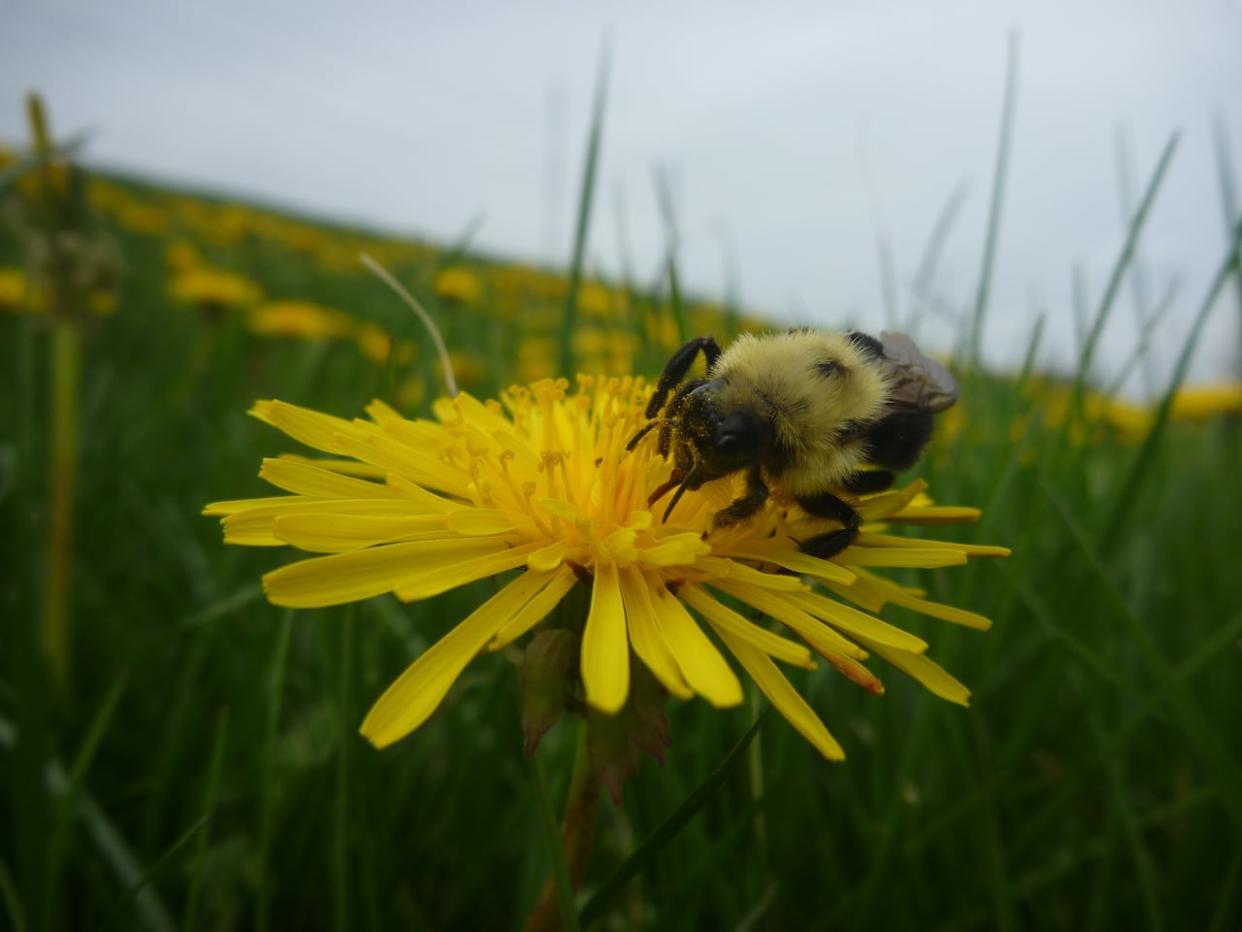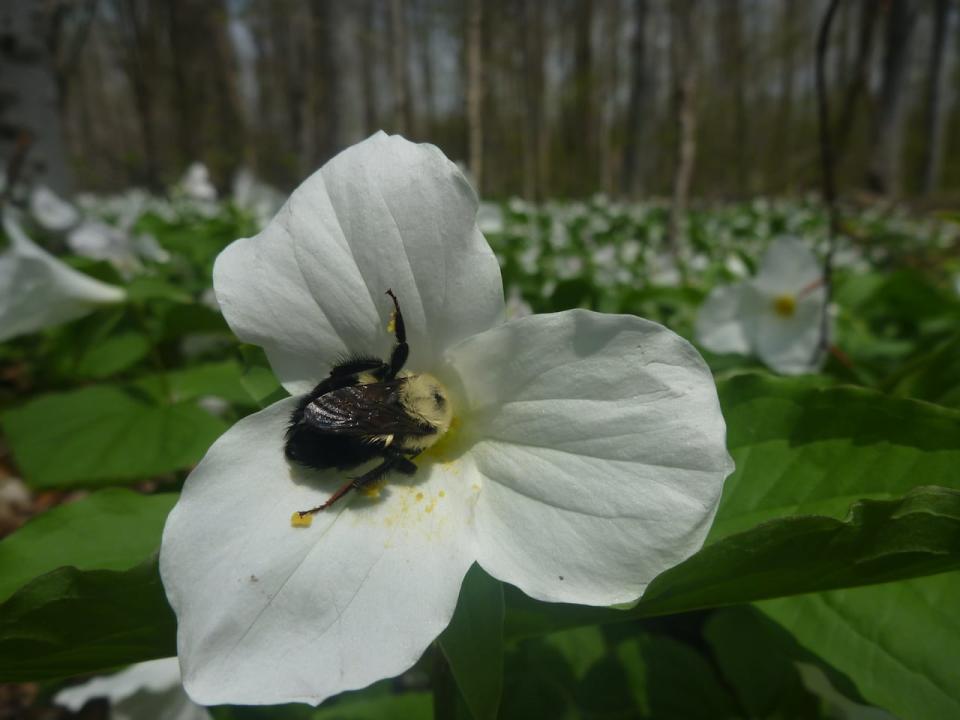Can bumblebees 'breathe' under water? New research offers clue to their resilience

A new study found that some bumblebees are flood-resistant, a discovery that sparks hope among researchers as flooding becomes more frequent due to climate change.
Sabrina Rondeau is a biologist at the University of Ottawa whose research focuses on the effects of pesticide residue on bumblebees. She recently authored an article in Biology Letters titled "Unveiling the submerged secrets: bumblebee queens' resilience to flooding."
The study didn't come about in a traditional way, Rondeau said.
"We kind of stumbled upon the discovery by accident," she told CBC Radio's Ottawa Morning.
Three years ago, Rondeau was conducting an experiment on pesticide residue in soil and its impact on common eastern queen bumblebees.
The bees were stored in tubes in a fridge for a few months to simulate hibernation, but due to the high humidity inside the fridge, water began dripping into four of the tubes.
"One day I came to check on my bees and I found that some of the tubes were completely filled with water," Rondeau said. "I was scared. I thought that all the bees were dead."

Sabrina Rondeau has been researching queen bumblebees for years, but never considered the possibility that they might survive submersion. (Submitted by Sabrina Rondeau)
But as she pulled the bees from the tubes with forceps, the insects started moving — much to her surprise.
This happy accident inspired Rondeau to pursue the theory that queen bumblebees could survive being submerged under water.
"I'd never heard of this possibility before," she said.
High survival rate
In 2023, Rondeau decided to conduct a study with 143 queen bumblebees.
The bees were put into tubes and divided into three groups: bees whose tube had no water, bees whose tubes were partially filled with water causing them to float on the surface, and bees that were fully submerged using a plunger-like tool.
Each group spent varying lengths of time inside the tubes: eight hours, 24 hours and seven days.
Ninety per cent of the bees survived, and there were no noticeable differences between those submerged for a week and those kept dry.
Rondeau believes the key to the bees' survival lies in their unique design.
Queen bumblebees have small holes in their abdomen called spiracles that open and close to let air in and out. She theorized that the submerged bees were able to close their spiracles and trap enough air to survive.
"Because their metabolism is so low during [hibernation], they have a low oxygen requirement. It's very possible that they can rely on the oxygen that's left in their respiratory system," she said.

A common eastern bumblebee collects pollen from a trillium. (Victoria MacPhail )
What it all means for Ontario's bees
This new discovery has brought hope that the bumblebee population may have one less threat to worry about.
"Bumblebees are not doing very well right now," Rondeau said. "One-third of all bumblebee species are declining."
If bumblebee queens die during hibernation, they can't establish new colonies in the spring, resulting in a significant decrease in population. A colony can have anywhere from 300 to 500 bees.
Climate change has altered precipitation patterns, caused water levels to rise, and melted snow and ice. All of these factors contribute to an increase in flooding.
The common eastern bumblebee can be found throughout Ontario and is not endangered. In fact, it's doing relatively well compared to other bee species. Rondeau theorizes their resilience to flooding may be contributing to their survival.
"They're already facing a lot of threats, so it's super encouraging to know that if flooding events are increasing in the future as predicted due to climate change, they might still be doing fine," she said.

